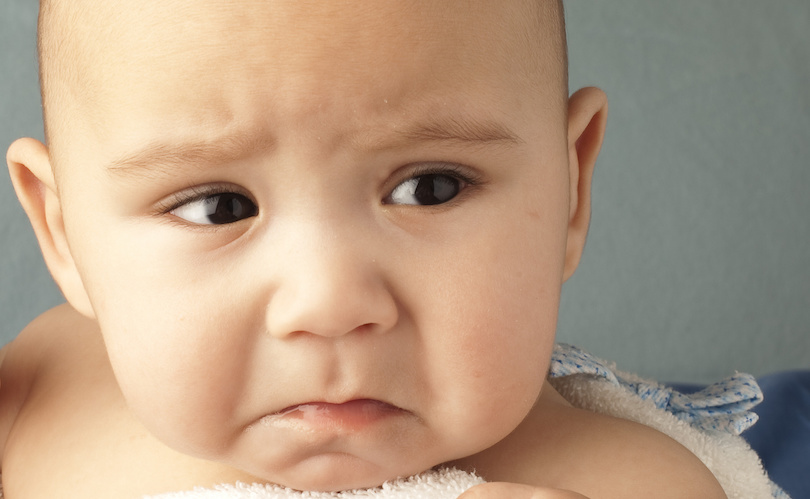How to Tell—and What to Do
There’s no getting around the common cold, which often strikes babies—sometimes as many as several times—before their first birthdays. Though time and rest are usually the best medicine, there are a few things you can do to give comfort while you wait it out together.
What to look for (often in this order)
- Eating or sleeping less than usual or waking up more at night
- Fussiness
- Low-grade fever (if it’s more than 100.4°F, call your provider)
- Frequent sneezing
- Runny nose or stuffiness (which can make feeding more difficult)
- Dry cough, especially at night
- Tugging at ears or sticking fingers in ears
- Thicker mucus, more frequent spit-up
How to help:
- Feed your baby as often as you can
- Run a cold-mist humidifier near the baby’s crib
- Prop up your sleeping baby’s head by placing something (a few books or a blanket) underneath the mattress)
- Try to break up congestion with nasal saline drops (sold in the drugstore) and an aspirator (bulb syringe)
- If baby has a cough, you can turn the hot water on in the shower, shut the bathroom door and stand in the bathroom (do NOT stand in the hot water) with baby as the bathroom fills with steam. This can be an effective way to help a young baby’s cough and congestion
When to call your provider
- If fever is high, spikes or continues to be more than 100.4°F for 3 or more days
- If baby seems to have trouble breathing
- If baby is tugging on ears
- If symptoms get worse over several days
- If baby has swollen glands
- If baby seems sleepier than normal
- If you have any other concerns
Because most colds in infants do not require treatment in an emergency room, contact your health care provider or nurse call line prior to going. Of course, if it is a true emergency or life-threatening event call 911.
Learn more about treating your baby's cold
Here’s what you can do to make your child feel more comfortable.
CLICK HERE TO LEARN MORE


